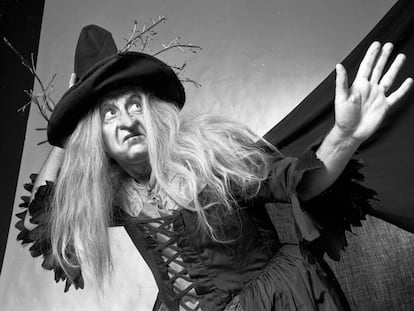Witchcraft reaches the classroom
The University of Exeter has created a master’s degree in Occult Science, while the Complutense University of Madrid offers a course on Magic and Religion

Witches and sorceresses are recurring characters in classical ballets and great works of literature. In the art by Max Ernst and Lucio Fontana, there are traces of this passion for alchemy, while Joan Miró's paintings reveal his interest in astrology, as was evident in an exhibition called The Occult, which was held last summer at the Thyssen-Bornemisza Museum in Madrid. The city’s National University of Distance Education subsequently followed up on the topic with a course.
This hidden art — persecuted by institutionalized religions in the past — has historically been viewed with distance and contempt by the academic world. But the situation is changing. As interest in this parallel history increases around the world, prestigious universities are rushing to incorporate it into their course offerings. The University of Amsterdam offers a major in Western Esotericism, while the Complutense University of Madrid now teaches the subject Magic and Religion. The University of Exeter has announced a master’s degree starting in September 2024 that — under the title Magic and Occult Science — aims to review the history of magic in Greece and Rome “in addition to delving into the history of witchcraft [and analyzing] the presence of magic in [religious texts], literature and folklore.”
This is a real novelty in the United Kingdom. “This institution has a large number of experts in the history of magic,” explains Emily Selove, who’s in charge of the new master’s degree. It’s dependent on the Institute of Arab and Islamic Studies, where she’s an associate professor. It may not be a coincidence that J. K. Rowling herself — author of the Harry Potter saga — studied at Exeter. It was also the site of the last execution of witches in England, at the end of the 17th century.
Is all of this an attempt to restore the memory of those women? “One of the most interesting aspects of studying magic,” Selove responds, “is that it allows us to look at historical texts with new eyes and rediscover voices that have been marginalized.”
Miguel Palomo — a professor at the Complutense University of Madrid and coordinator of the degree in Religious Sciences, under which the course Magic and Religion is taught — admits that there’s interest in making amends. He also notes that there’s still a lot of confusion about what exactly is meant by “witches.” Among those who risked dying at the stake were healers and alchemists, “but those who suffered persecution were mostly religious women and men accused of heresy,” Palomo emphasizes. “A paradigmatic case would be that of María de Bohórquez, who, in the 16th century, was condemned to die at the stake in her youth.”
The court granted her some grace: rather than being burned alive, she was executed by garrote and her corpse was burned. A faithful defender of the Protestant Reformation, Bohórquez wasn’t skilled in spells, but rather in Hebrew and Latin.
Sign up for our weekly newsletter to get more English-language news coverage from EL PAÍS USA Edition
Tu suscripción se está usando en otro dispositivo
¿Quieres añadir otro usuario a tu suscripción?
Si continúas leyendo en este dispositivo, no se podrá leer en el otro.
FlechaTu suscripción se está usando en otro dispositivo y solo puedes acceder a EL PAÍS desde un dispositivo a la vez.
Si quieres compartir tu cuenta, cambia tu suscripción a la modalidad Premium, así podrás añadir otro usuario. Cada uno accederá con su propia cuenta de email, lo que os permitirá personalizar vuestra experiencia en EL PAÍS.
¿Tienes una suscripción de empresa? Accede aquí para contratar más cuentas.
En el caso de no saber quién está usando tu cuenta, te recomendamos cambiar tu contraseña aquí.
Si decides continuar compartiendo tu cuenta, este mensaje se mostrará en tu dispositivo y en el de la otra persona que está usando tu cuenta de forma indefinida, afectando a tu experiencia de lectura. Puedes consultar aquí los términos y condiciones de la suscripción digital.










































